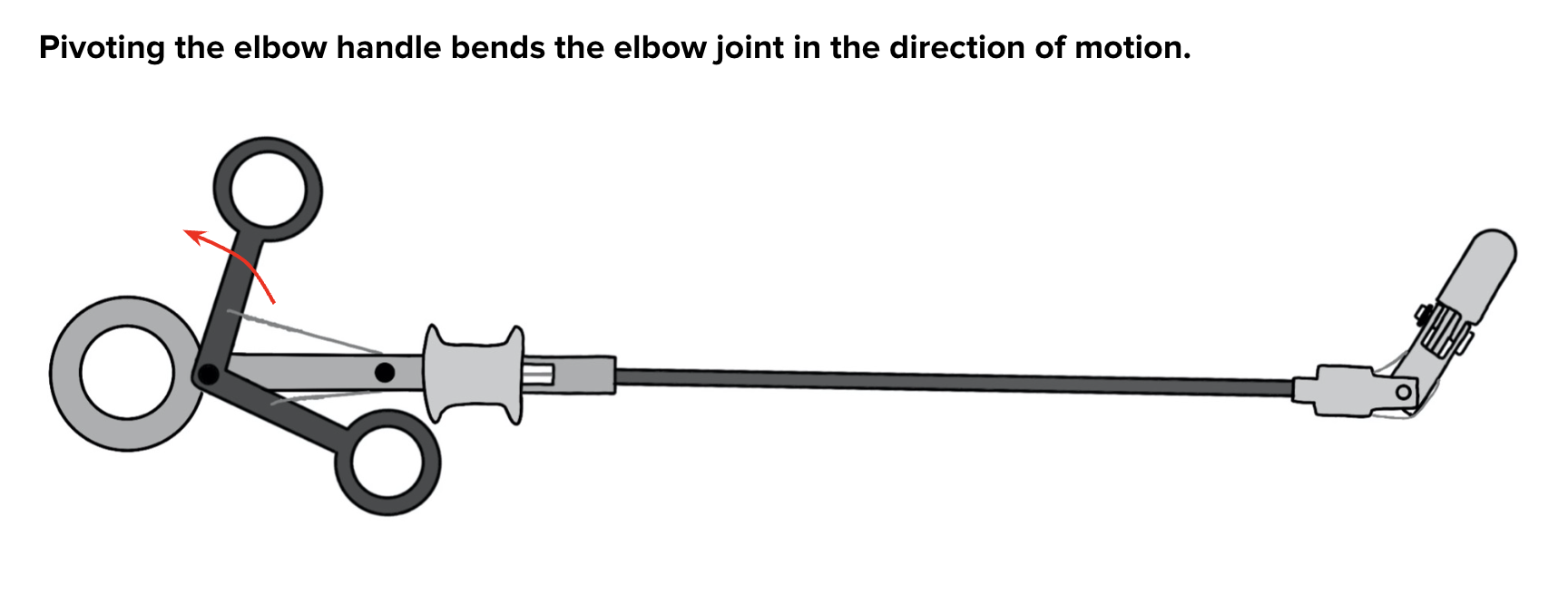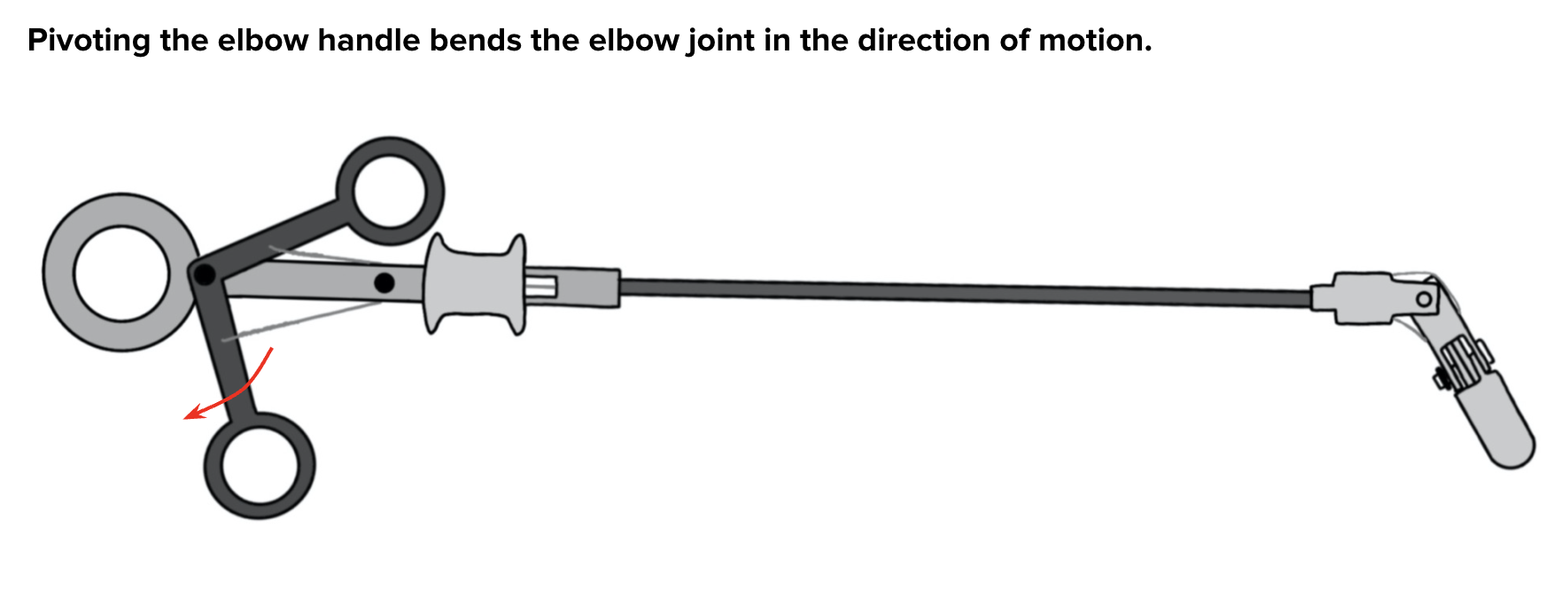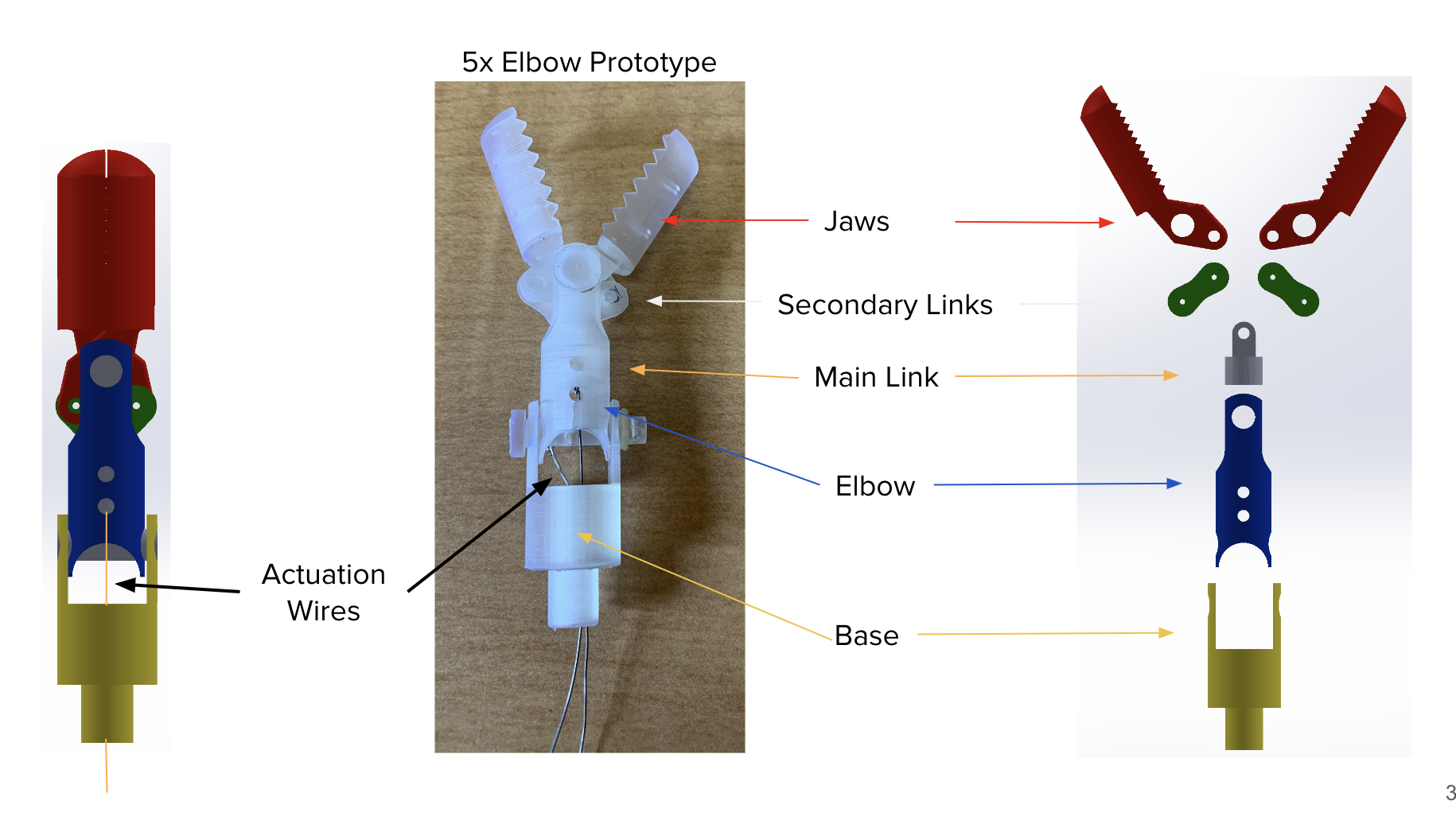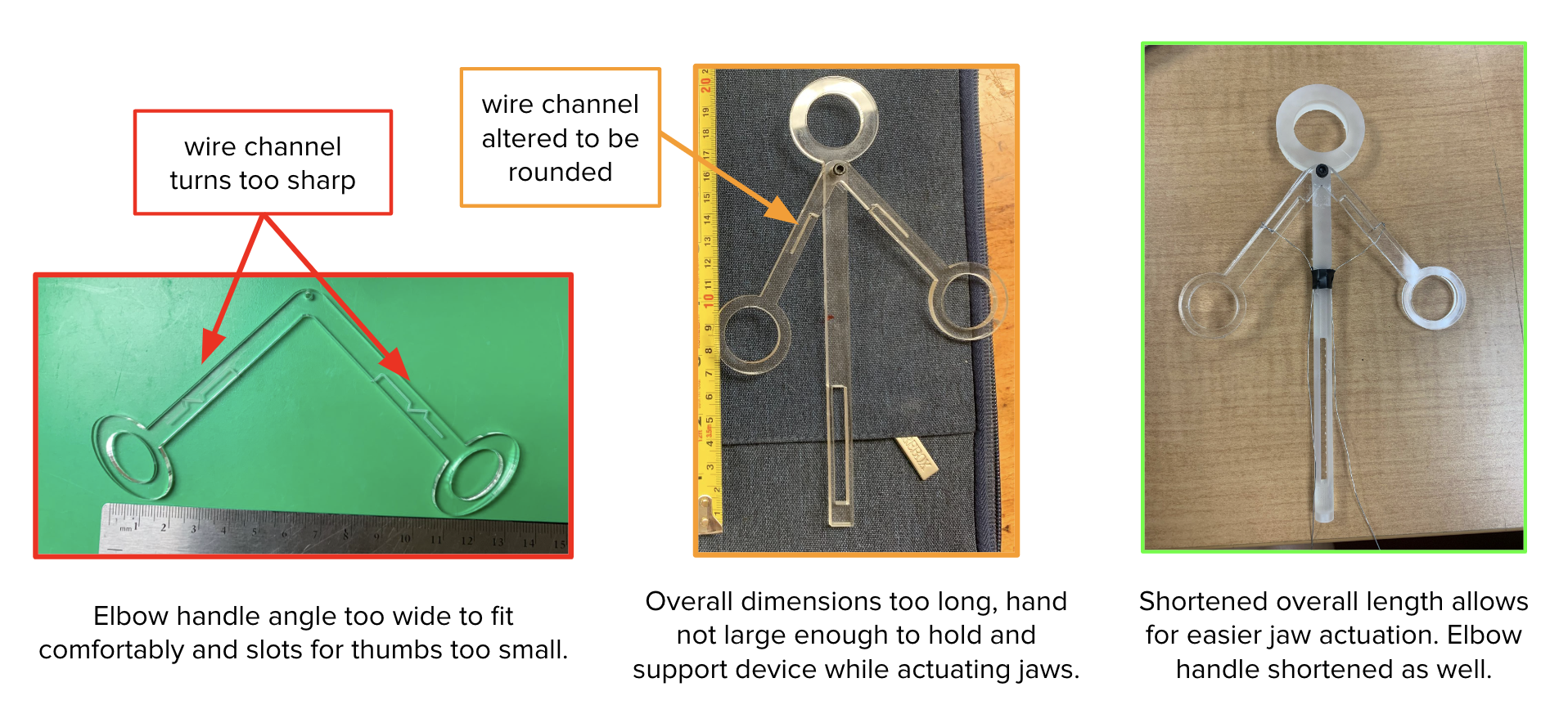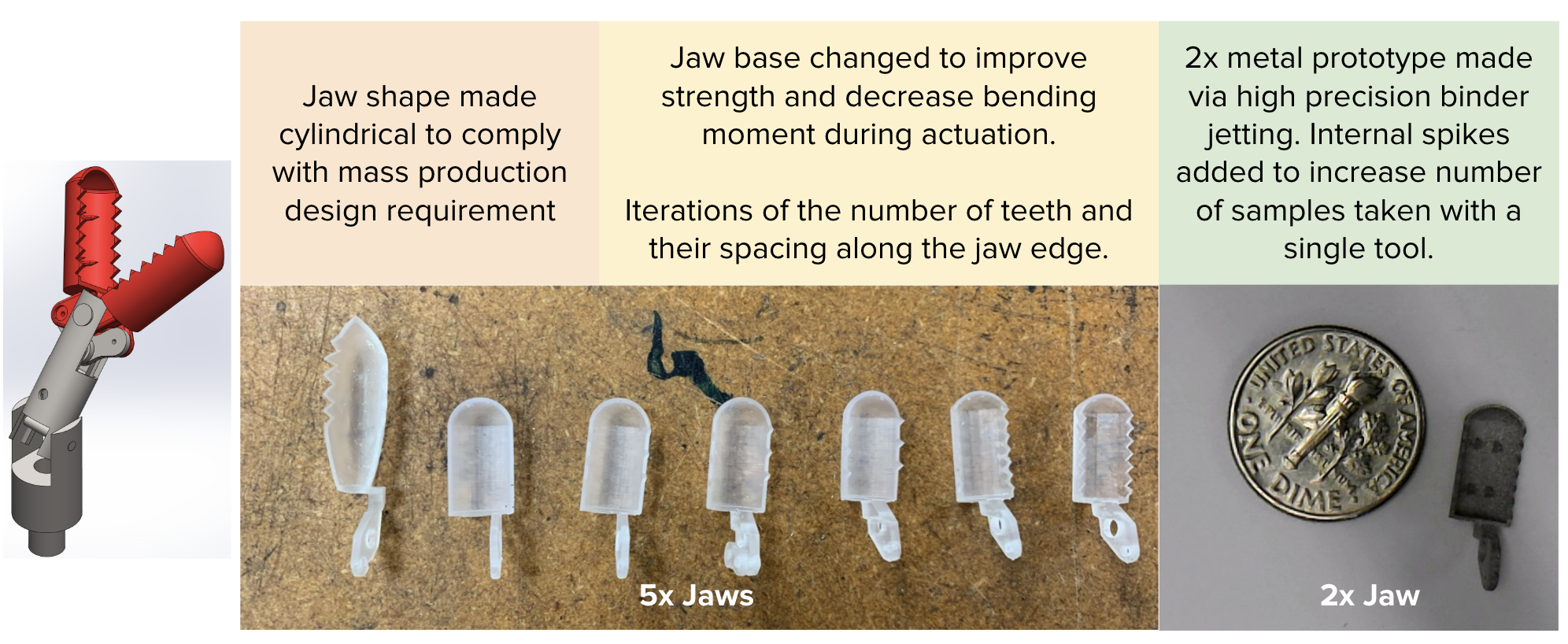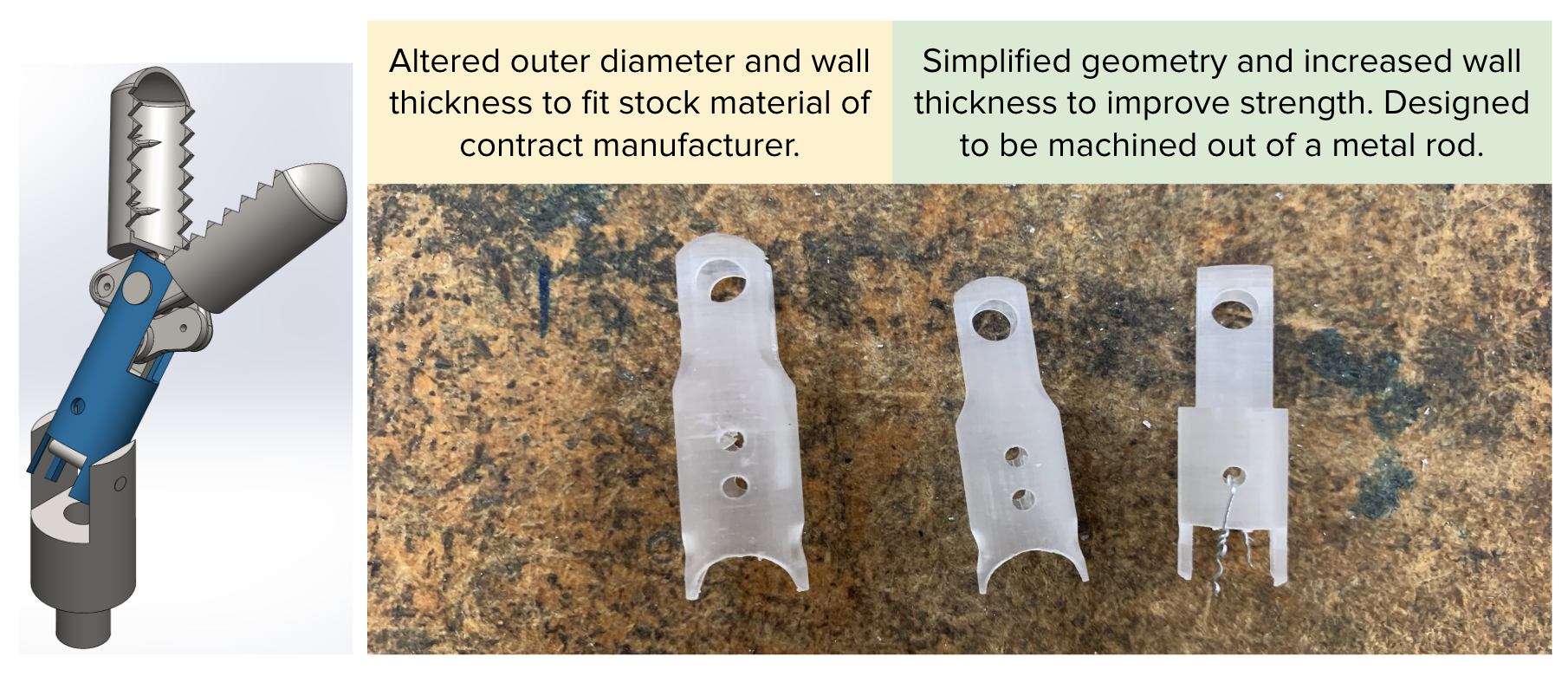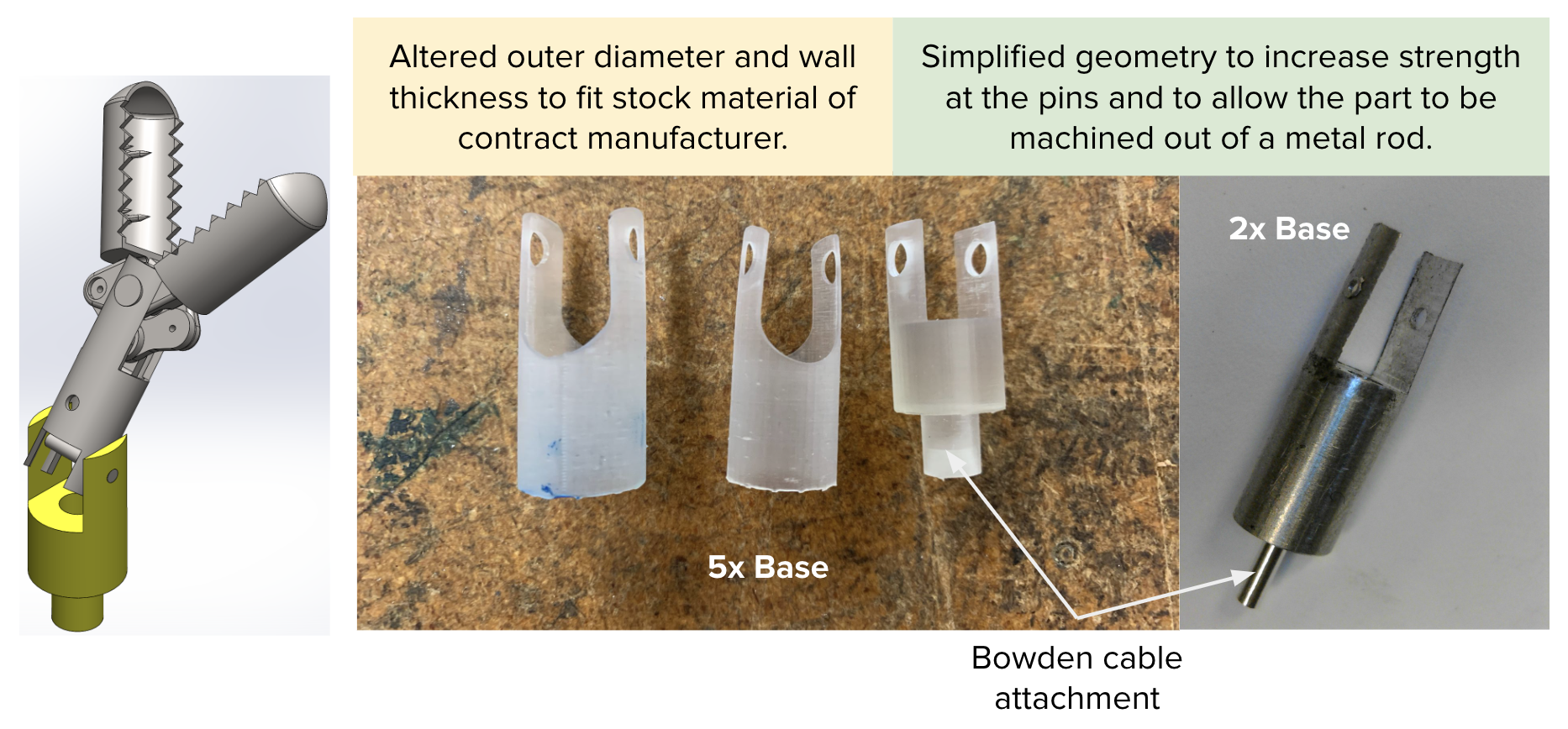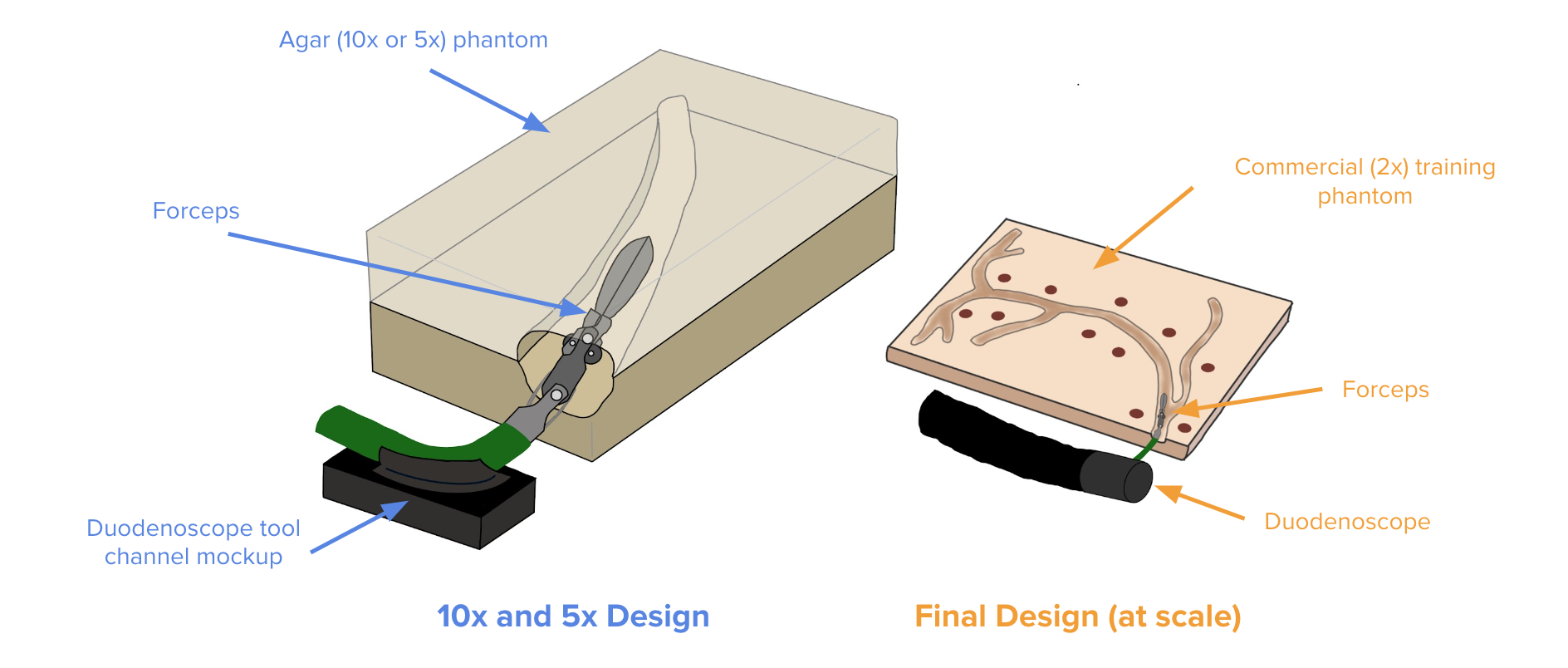ENDOSCOPY FORCEPS FOR IMPROVED TISSUE SAMPLING
Senior capstone project completed under the guidance of Dr. Nathan Scott and Dr. Stephen Belkoff.
Project Summary:
In collaboration with the Khashab Product Development Lab at Johns Hopkins Hospital, my team and I designed, prototyped, and tested a set of novel endoscopy forceps to enable higher biopsy success rates by collecting cleaner, deeper tissue samples at a wider range of motion. Through multiple rounds of research, iteration, and feedback from our sponsors we developed a pivoting “elbow” prototype and demonstrated proof of concept at 5x scale. We then developed partnerships and manufacturing techniques to reduce the prototype to 2x scale prior to transitioning the project to an incoming group of senior undergraduates.
Background:
Current forceps on the market have a limited range of motion which prevents the collection of certain viable samples, specifically from areas like the side walls. The observed failure rate of endoscopic biopsy procedures reported by our team of gastroenterologists was 60%, due to factors such as insufficient tissue sample and tissue analysis error. We developed a pivoting type of forceps with internal spikes which would allow access to previously hard-to-reach biopsy locations as shown in the image below, with better sample retention to improve biopsy success rates.
Operating the Forceps:
The forceps design features two actuation methods – a pivoting handle for adjusting the angle of the jaws over a 120˚ range and a slider for opening and closing the jaws. The actuation methods were designed to be comfortably, independently, and simultaneously operated by a single user.
Adjusting Position:
Actuating Jaws:
Final Assembly Design Overview:
The final design of the forceps mechanism is presented below. Internal linkages enable the forceps jaws to open and close while also pivoting on a pin joint.
Actuation Design:
Prototype examples of the pivoting handle mechanism.


